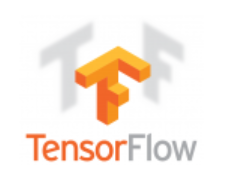 Overview
Overview
This course explores, with specific examples, the application of Tensor Flow to the purposes of image recognition
Audience
This course is intended for engineers seeking to utilize TensorFlow for the purposes of Image Recognition
After completing this course, delegates will be able to:
- understand TensorFlow’s structure and deployment mechanisms
- carry out installation / production environment / architecture tasks and configuration
- assess code quality, perform debugging, monitoring
- implement advanced production like training models, building graphs and logging
Requirements
- Python
Course Outline
Machine Learning and Recursive Neural Networks (RNN) basics
- NN and RNN
- Backpropagation
- Long short-term memory (LSTM)
TensorFlow Basics
- Creation, Initializing, Saving, and Restoring TensorFlow variables
- Feeding, Reading and Preloading TensorFlow Data
- How to use TensorFlow infrastructure to train models at scale
- Visualizing and Evaluating models with TensorBoard
TensorFlow Mechanics 101
- Tutorial Files
- Prepare the Data
- Download
- Inputs and Placeholders
- Build the Graph
- Inference
- Loss
- Training
- Train the Model
- The Graph
- The Session
- Train Loop
- Evaluate the Model
- Build the Eval Graph
- Eval Output
Advanced Usage
- Threading and Queues
- Distributed TensorFlow
- Writing Documentation and Sharing your Model
- Customizing Data Readers
- Using GPUs¹
- Manipulating TensorFlow Model Files
TensorFlow Serving
- Introduction
- Basic Serving Tutorial
- Advanced Serving Tutorial
- Serving Inception Model Tutorial
Convolutional Neural Networks
- Overview
- Goals
- Highlights of the Tutorial
- Model Architecture
- Code Organization
- CIFAR-10 Model
- Model Inputs
- Model Prediction
- Model Training
- Launching and Training the Model
- Evaluating a Model
- Training a Model Using Multiple GPU Cards¹
- Placing Variables and Operations on Devices
- Launching and Training the Model on Multiple GPU cards
Deep Learning for MNIST
- Setup
- Load MNIST Data
- Start TensorFlow InteractiveSession
- Build a Softmax Regression Model
- Placeholders
- Variables
- Predicted Class and Cost Function
- Train the Model
- Evaluate the Model
- Build a Multilayer Convolutional Network
- Weight Initialization
- Convolution and Pooling
- First Convolutional Layer
- Second Convolutional Layer
- Densely Connected Layer
- Readout Layer
- Train and Evaluate the Model
Image Recognition
- Inception-v3
- C++
- Java
¹ Topics related to the use of GPUs are not available as a part of a remote course. They can be delivered during classroom-based courses, but only by prior agreement, and only if both the trainer and all participants have laptops with supported NVIDIA GPUs, with 64-bit Linux installed (not provided by NobleProg). NobleProg cannot guarantee the availability of trainers with the required hardware.
